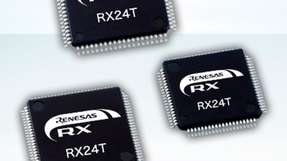What is a standard? Understandings of the word standard unfortunately vary widely. A real standard is listed and managed by a non-profit organization like PICMG and the PC/104.org with its corresponding standards such as COM Express, MicroTCA, and PC/104. Real standards are characterized by the fact that all parameters have set definitions and therefore guarantee compatibility. The word standard is also sometimes used when an idea establishes itself within a larger group, is defined and managed by this interest group, but unlike a real standard refrains from using a too restrictive set of definitions. This vagueness of definition sometimes leads to products from individual providers not being fully compatible. These so-called industry standards include, among others, ETX and Qseven. Industry standards are generally defined faster and changes to the specifications also happen quite rapidly. However, many manufacturers also use the term „standard” for their own definitions supported only by themselves. It‘s doubtful that the term truly applies in this case.
Expectations and advantages
One of the most common arguments for a standard is the choice between different providers, in other words greater security of supply. Not insignificant is the possibility of playing suppliers off against each other to get a better buying price. A second point is the possible scalability of systems. If a module‘s performance is not enough, one can simply take the next more powerful one and solve the problem. In most cases, however, that‘s just a nice theory. What halfway works for the x86 due to very high compatibility between a COM Express module with an Atom processor and another COM Express module with Core i3, is much more difficult for ARM modules. This makes switching from an ARM9 to a Cortex-A9 possible only with significant software adjustments -and a Cortex-A9 has considerably more functions than an ARM9 . The switch from an ARM9 module to a „pin-compatible“ Cortex-A9 module would only use a very small part of the Cortex-A9 processor, but require payment for the full scope of performance. In reality, users normally adapt their application board when changing processors in order to make the best use of the processor‘s additional functions. Or they simply get a new device. Often processor-optimized proprietary module solutions are the best approach.
The new standards for ARM modules
Ultimately, deciding on a module provider is a decision with long-term effects, later changes are difficult and expensive. There are basically three different approaches: Qseven consortium, ULP COM consortium, and various proprietary solutions. As usual, each provider puts forth good arguments for their solution. As a rule, a standard defines both the board size and the pin allocation of the connector system and the systems should be compatible and therefore interchangeable. Most of the pins/functions of the processor should be available via the connector system. Finally, the standard may define functions that are not supported at all. An examination of successful standards in the x86 market, for example COM Express, shows that all processor functions are displayed. Depending on the processor or chipset, some functions defined in the standard may not be supported because the processor or chipset does not deliver these functions. The best standard is characterized by the fact that all processor functions are available for use and that all other functions are realized via extra chips. If one compares the systems offered using the factors described above, it quickly becomes clear that a real standard with guaranteed compatibility and interchangeability is not possible in the ARM market except on a limited basis. The module connector defined in the Qsevenstandard with 230 pins, cannot provide access to all the signals of an ARM Cortex A9 processor. Additional connectors on the module help, but these are not yet defined in the standard and are therefore interpreted differently by each board manufacturer. Thus compatibility between different manufacturers is highly limited. A big step has already been taken in the direction of standardizing ARM modules, but the very different characteristics of processors from individual chip suppliers make a real standard like the COM Express for x86 modules of only limited use. One of the main arguments for standards, their interchangeability, only applies to ARM modules if a very restricted number of signals is used. A proprietary system has the freedom and the advantage of being able to be customized and developed specifically for a processor or processor family. The board size can usually be much smaller than a standard board. When it comes to interfaces, all or the large majority of interfaces can be made available on the system connector. Viewed in light of the longest possible use of a processor platform, such a module offers the greatest possible freedom for users. It is from this point of view that TQ modules were and are developed - maximum performance with the greatest integration, provision of all signals, robust and reliable connector system, and smallest module size. As in the x86 market, however, different solutions in the ARM module market will surely continue to exist and find users.















